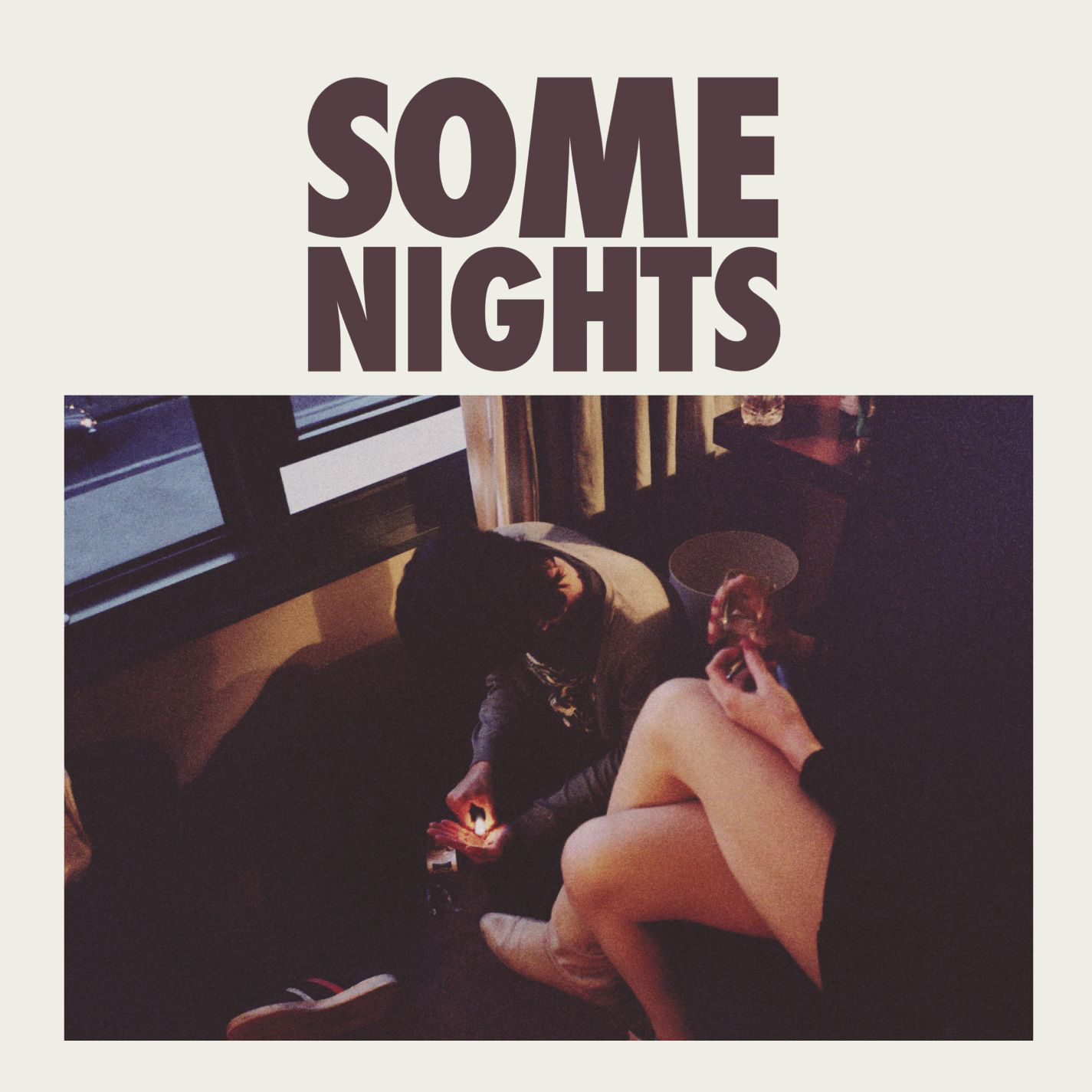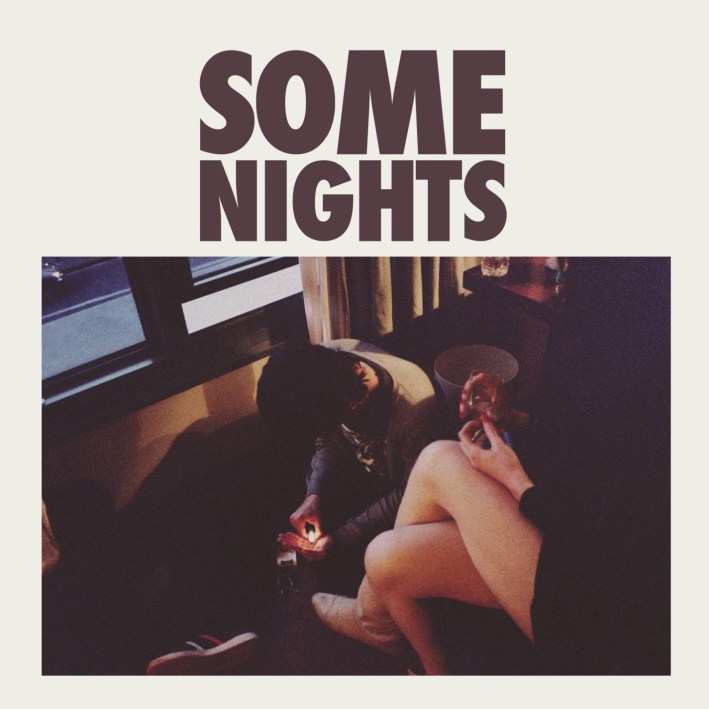- Fueled By Ramen
- 2012
To paraphrase some famous dialogue from Jack Antonoff's ex-girlfriend, Nate Ruess was the voice of a generation. He was also... a bit of a weenie? So it goes when your album embodies the essence of "millennial" in all its most glorious and cringe connotations. Take it from a fellow starry-eyed dweeb born in 1983.
I have always loved Some Nights. Its flaws were readily apparent, but so was its appeal. Released 10 years ago today, fun.'s blockbuster second album now feels like a time capsule for a very specific moment. That's partly because fun. never made another record and partly because, for better or worse, the NYC trio's brand of heart-on-sleeve bombast helped set a template for the big-budget pop-rock of the early 2010s. For decades to come, Hollywood music supervisors will be deploying "We Are Young" to telegraph a particular sense of time and place. It has the potential to become for Gen Y coming-of-age stories what "Fortunate Son" is for Vietnam. And hey, as era-defining anthems go, you could do worse.
"Give me a second I, I need to get my story straight/ My friends are in the bathroom getting higher than the Empire State" -- that's scene-setting! The buildup from thudding tom to rolling snare to unvarnished Billy Joel piano with no drums at all -- that's rising drama! And the chorus? The way Ruess whips his voice to the heavens while that monolithic "Runaway" synth surges forward into the unknown, calling on his peers to build something from the wreckage of their youth before the moment passes them by? It's no wonder fun. became the first rock band since Nickelback to send their debut Hot 100 entry all the way to #1, or that the Grammys anointed them as Best New Artist in 2013. "We Are Young" was so expertly engineered to be an anthem that even a larger-than-life figure like Janelle Monae got lost in its upward sprawl.
Before they were fun., Ruess (vocals), Antonoff (guitar), and Andrew Dost (keyboards) were each key players in emo-adjacent 2000s indie bands: Arizona's the Format, New Jersey's Steel Train, and Chicago's Anathallo respectively. None of these groups had much to do with the critical zeitgeist of their era, nor did they record any big chart hits, but they forged fervent fan bases that followed them into this new venture at the turn of the decade. Their 2009 debut album Aim And Ignite was a trial run for fun.'s over-the-top maximalism. With Steven McDonald of Redd Kross behind the boards, they crafted a stack of baroque indie-pop suites piled up with vocal harmonies, violins, and flugelhorns galore, shot through with theater-kid energy and MySpace-emo sass.
Although weighed down by its own ambition, that first fun. album was successful enough to get them signed to emo-pop hub Fueled By Ramen, which at the time was a subsidiary of Atlantic, the label that famously dropped Ruess' former band the Format before their sophomore album. Any hard feelings must have evaporated when they ended up in a room with Jeff Bhasker, the rap and pop producer whose name kept showing up in the liner notes of their favorite rap and pop records. Over and over again while promoting Some Nights, fun. talked about how much they admired Bhasker's work on Kanye West's My Beautiful Dark Twisted Fantasy and how they'd longed to infuse that kind of blown-out hip-hop grandeur into songs rooted in theatrical classic rock. They got their wish.
In the studio, Bhasker taught fun. to streamline their songs for maximum impact. "In the past we've been a little guilty of kind of piling things on for the sake of it," Antonoff said at the time -- so a producer who was all about "making it bigger and more grand by doing less" was just the ticket. Bhasker helped the band unclutter their arrangements so that their songs could achieve liftoff, and he blew their minds by constructing thunderstuck programmed beats on the spot. The pairing of that skeleton with fun.'s grandiose songcraft and Ruess' powerhouse whine proved to be extremely potent; basically it was Queen for an era when rappers were the new rock stars and Pinterest was on the rise.
Rock was not exactly a hot mainstream proposition in the years leading up to Some Nights, but it turned out there was an opening for rock records this self-consciously large and aggressively poppy. This was the peak of the EDM craze, the height of Lex Luger, the queendom of Kesha and Katy and Gaga and Rihanna. Even staunch traditionalist Adele was a towering force belting ballads to the rafters. If any rock music was going to pop off, it was going to be as loud and garish as the rest of the Top 40 dial. Thus, fun. were able to wriggle their way into ubiquity alongside fellow howlers like Mumford & Sons and Imagine Dragons -- hardly the most flattering bands to share a zeitgeist with, but ones that make fun. seem tasteful and inspired by comparison.
In some ways Some Nights felt like a natural evolution from the glib, nuclear-powered cyborg rock Fall Out Boy were releasing at their MTV-conquering peak, though its most obvious and immediate predecessor is probably Coldplay's synth-streaked pop move Mylo Xyloto. There's also a sense in which fun. took over where indie rock's mainstream crossover stalled out. Maura Johnston's Spin review drew connections to both Grizzly Bear's piano-plinking chamber-pop and Sleigh Bells' charred-earth bubblegum rock. While those indie stars strove to maintain a veneer of cool even as they worked their way up the industry ladder, fun. were shameless in their pursuit of a stadium-sized connection. At the same time, despite sharing a certain indignance with sneering emo singers like Brendon Urie and Hayley Williams, Ruess projected a softer, more sensitive persona: a plucky underdog seasoned with self-pity and self-loathing but unafraid to let 'er rip. "He has a huge voice, all snarl and Broadway panache," Jody Rosen wrote in Rolling Stone. "At his full-fathom best, he could send Adam Lambert scrambling for cover."
Beginning with the album's operatic intro, on which Ruess sits at home waiting to be frightened into "changing whatever it is I am changing into," he spends Some Nights grappling with the Peter Pan syndrome that plagued so many of his peers, this sense of still feeling like a lost child as he enters his 30s. There's enough talk about missing his parents to get him labeled as a beta by people far more insufferable than Nate Ruess. There are flashes of poetic melodrama like "I found a martyr in my bed tonight." The tracklist chases multiple calls for perseverance with three consecutive laments about heartbreak and loneliness. Ruess comes across as smarmy and self-satisfied at times, but with enough self-awareness to keep leading him back to ego death. "Oh my god, have you listened to me lately?" he sings at the peak of his Freddie Mercury impression. "I've been fucking crazy!"
Ultimately your feelings about Ruess and his bildungsroman are probably tied to your feelings about the music, and as far as I'm concerned, fun. snapped. Antonoff once said the title track was designed to sound like Clark Griswold's house lighting up in Christmas Vacation, and, yes. Mission accomplished. From the sledgehammer vocal harmonies to the pounding drums to the piercing lyrics ("What do I stand for? Most nights I don't know anymore..."), "Some Nights" the song sets a standard the rest of Some Nights the album never quite lives up to. But from there the hooks are abundant, the quips memorable, the musical flourishes vibrant and plentiful. "Carry On" is as elegant an inspirational power ballad you could hope for. "Why Am I The One" renders the pathetic sublime. (As a chorus, "Why am I the one always packing up my stuff?" manages to be both moving and hilarious.) The angrily blaring "One Foot" and the soaring "Stars" are back-to-back displays of power and finesse; the latter epic has aged better than Ruess elevator pitches like "Marvin Gaye in space" and "Gnarls Barkley's take on Van Morrison" would have you believe.
Not that anyone would blame you if you now lump Some Nights in with some of the most hollow corporate alt-rock of the peak festival era, the same way Pearl Jam tend to blur into all the butt-rock they inspired. But in 2012 this stuff sounded fresh, even revolutionary when it clicked. Bhasker's drum-machine barrages blended seamlessly with the band's glammy classic rock -- which, by the way, was ahead of the curve when it comes to the younger generation's post-biopic embrace of Queen and Elton John. The album's then-novel experiments with Auto-Tune were more of a mixed bag, sometimes great and sometimes grating. The worst offender has always been the high-fructose digital pop-punk song "It Gets Better," a graceless brick on an otherwise graceful album -- but at this phase of the pop-punk revival, after a decade of SoundCloud rap and digicore and chiptune-emo hybrids, that clunker feels like one of the more prophetic tracks on Some Nights.
We'll never know whether fun. might have kept setting trends, making hits, and annoying those less inclined toward ostentatious nasal emoting. Before they could release another album, Ruess took the songs that might have been fun. LP3 and turned them into a 2015 solo album that predicted The Greatest Showman's world-conquering cheese but did not, in fact, conquer the world. That same year, Dost scored the Jack Black-starring Sundance movie The D Train and teased a solo album that never materialized. By that point Antonoff was well on his way to becoming one of the most successful and polarizing superstar producers in modern music and was building a respectable following for his new band Bleachers. Given what a bad rap this kind of music developed over the course of the 2010s, maybe it's more accurate to say fun. never had a chance to go out of style. And maybe it's better this way, to go out on top rather than go stale. They aren't young anymore, but for a minute there, they really did burn brightly.







